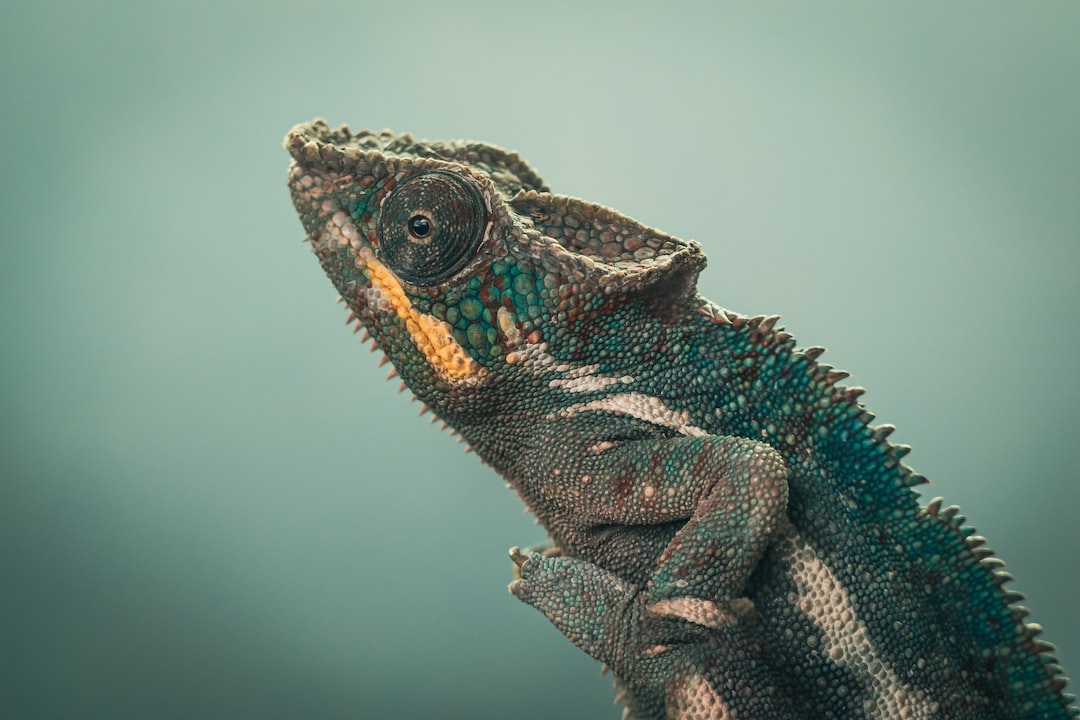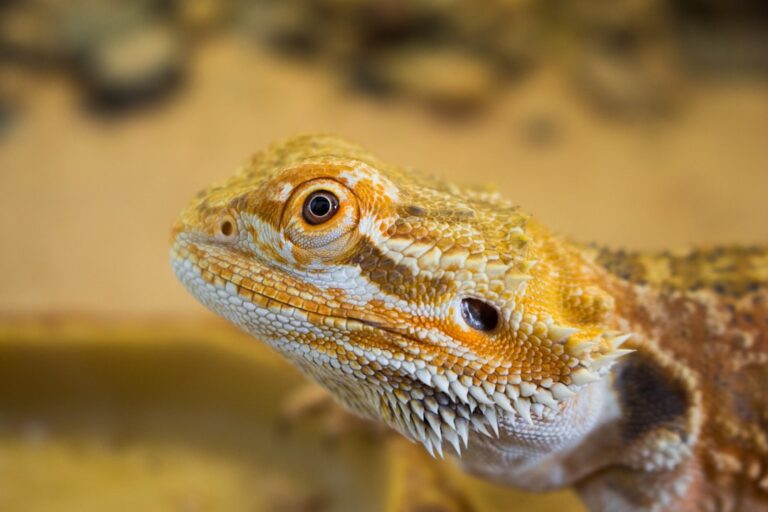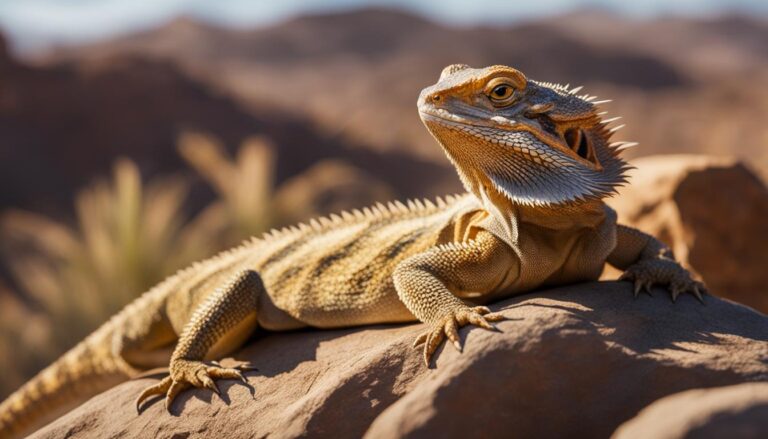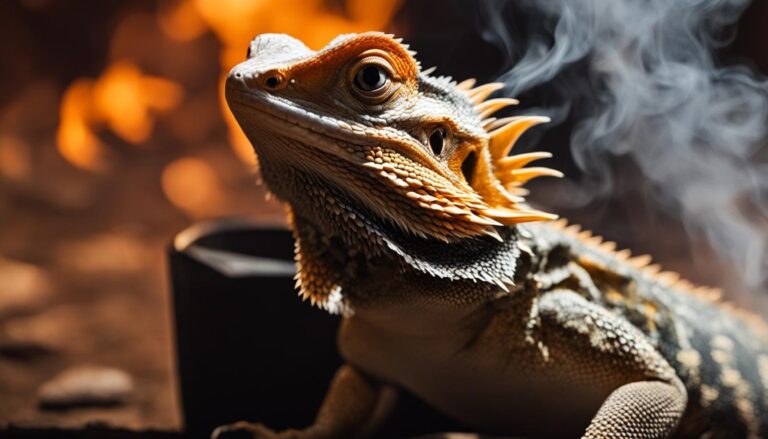Why Do Bearded Dragons Sleep Standing Up?
Bearded dragons are popular reptile pets known for their unique appearance and docile nature. Native to the arid regions of Australia, these reptiles have become increasingly popular as pets due to their low maintenance requirements and friendly demeanor. One aspect of their behavior that often fascinates owners is their sleeping habits.
Bearded dragons are diurnal creatures, meaning they are active during the day and sleep at night. However, their sleep patterns can vary depending on factors such as age, health, and environmental conditions. While some bearded dragons may sleep for long periods of time, others may take short naps throughout the day. It is important for owners to understand their pet’s sleeping habits in order to provide them with a comfortable and conducive sleeping environment.
Table of Contents
The Physiology of Bearded Dragons
Bearded dragons have a unique physiology that sets them apart from other reptiles. They have a stocky build with a broad head and a spiky beard, which they can puff up when threatened or displaying dominance. Their bodies are covered in scales, which help protect them from predators and regulate their body temperature.
The physiology of bearded dragons plays a significant role in their sleep patterns. Unlike mammals, bearded dragons do not have eyelids, so they cannot close their eyes completely. Instead, they have a transparent scale called a spectacle that covers their eyes and provides some protection. This means that even when they are asleep, bearded dragons are still able to see their surroundings.
Additionally, bearded dragons have a unique respiratory system that allows them to breathe while sleeping. They have a series of air sacs located throughout their body, which enable them to take in oxygen even when they are not actively breathing. This adaptation allows them to sleep without interruption and ensures that they receive sufficient oxygen during their resting periods.
The Evolutionary Reason for Sleeping Standing Up
One of the most intriguing aspects of bearded dragon sleep is their tendency to sleep standing up. Unlike many other reptiles that sleep in a horizontal position, bearded dragons often sleep with their bodies upright and their legs extended. This behavior has evolved as a survival mechanism to protect them from predators.
Sleeping in a vertical position allows bearded dragons to conserve energy and remain alert to potential threats. By standing up, they are able to quickly react to any approaching predators or disturbances in their environment. This behavior is especially important for bearded dragons in the wild, where they are exposed to a variety of predators such as birds of prey and snakes.
The Benefits of Sleeping Standing Up for Bearded Dragons
Sleeping in a vertical position offers several benefits for bearded dragons. Firstly, it allows them to conserve energy by reducing the amount of muscle activity required to maintain a horizontal position. By standing up, they can rest their muscles while still remaining alert and ready to respond to any potential danger.
Secondly, sleeping standing up helps bearded dragons regulate their body temperature more effectively. By extending their legs and exposing more surface area to the surrounding air, they can dissipate heat more efficiently. This is particularly important for bearded dragons, as they rely on external heat sources such as basking spots and heat lamps to maintain their body temperature.
Lastly, sleeping in an upright position allows bearded dragons to easily access their food and water sources. In the wild, they often sleep near branches or rocks where they can easily climb down to find food or water when they wake up. This behavior has been retained in captivity, where bearded dragons will often sleep near their food and water bowls for easy access upon waking.
The Role of Temperature in Bearded Dragon Sleep
Temperature plays a crucial role in the sleep patterns of bearded dragons. As ectothermic reptiles, they rely on external heat sources to regulate their body temperature. In the wild, bearded dragons bask in the sun to warm up their bodies and then seek shade to cool down. This natural behavior is important for their overall health and well-being.
When it comes to sleep, bearded dragons require a specific temperature range to ensure a restful and comfortable sleep. The optimal temperature for sleeping is between 75-85 degrees Fahrenheit (24-29 degrees Celsius). This temperature range allows them to maintain their body temperature without becoming too hot or too cold.
It is important for owners to provide a suitable thermal gradient in the enclosure to allow bearded dragons to regulate their body temperature during sleep. This can be achieved by providing a basking spot with a heat lamp at one end of the enclosure and a cooler area at the other end. By having access to different temperature zones, bearded dragons can choose the most comfortable spot for sleeping.
The Importance of Light in Bearded Dragon Sleep
Light also plays a significant role in the sleep patterns of bearded dragons. In the wild, they rely on natural sunlight to regulate their sleep-wake cycle. The exposure to natural light helps synchronize their internal clock and promotes healthy sleep patterns.
In captivity, it is important to provide bearded dragons with a consistent light-dark cycle to mimic their natural environment. This can be achieved by using a timer to control the lighting in their enclosure. During the day, bearded dragons should have access to 10-12 hours of bright light, which can be provided by a combination of natural sunlight and artificial lighting.
At night, it is important to provide a period of darkness for bearded dragons to sleep. This can be achieved by turning off all lights in the enclosure or using a low-intensity red or blue light, which does not disrupt their sleep patterns. It is important to avoid using bright white lights at night, as this can interfere with their ability to sleep.
The Effect of Environment on Bearded Dragon Sleep
The environment in which bearded dragons are kept can have a significant impact on their sleep patterns. A comfortable and conducive sleeping environment is essential for promoting healthy sleep and overall well-being.
One important factor to consider is the size of the enclosure. Bearded dragons require a spacious enclosure that allows them to move around freely and assume different sleeping positions. A cramped or overcrowded enclosure can cause stress and discomfort, leading to disrupted sleep patterns.
The substrate or bedding used in the enclosure can also affect bearded dragon sleep. It is important to choose a substrate that is safe, comfortable, and easy to clean. Avoid using substrates that can cause irritation or impaction if ingested, such as loose sand or small particles. Opt for substrates such as reptile carpet or paper towels, which are safe and easy to maintain.
The overall temperature and humidity levels in the enclosure should also be carefully monitored. Bearded dragons require a warm and dry environment to thrive. High humidity levels can lead to respiratory issues, while low humidity levels can cause dehydration. Maintaining the appropriate temperature and humidity levels will ensure that bearded dragons are comfortable and able to sleep soundly.
The Impact of Stress on Bearded Dragon Sleep
Stress can have a significant impact on the sleep patterns of bearded dragons. Like all animals, they are sensitive to their environment and can become stressed by various factors such as loud noises, sudden changes in their surroundings, or interactions with other pets or humans.
Stress can disrupt their sleep patterns and lead to restless or disturbed sleep. It is important for owners to create a calm and quiet environment for their bearded dragons to promote healthy sleep. This can be achieved by placing their enclosure in a quiet area of the house, away from high-traffic areas or noisy appliances.
Additionally, it is important to handle bearded dragons gently and avoid any rough or sudden movements that can startle or stress them. Regular and gentle handling can help them become accustomed to human interaction and reduce their stress levels.
How to Ensure Your Bearded Dragon Gets Proper Sleep
To ensure that your bearded dragon gets proper sleep, it is important to promote healthy sleep habits and avoid common mistakes that can disrupt their sleep patterns.
Firstly, provide a comfortable and spacious enclosure that allows them to move around freely and assume different sleeping positions. Avoid overcrowding the enclosure with unnecessary decorations or accessories that can limit their movement or cause stress.
Secondly, maintain the appropriate temperature and humidity levels in the enclosure. Use a thermometer and hygrometer to monitor these levels regularly and make any necessary adjustments. Bearded dragons require a warm and dry environment to sleep comfortably.
Thirdly, establish a consistent light-dark cycle to mimic their natural environment. Use a timer to control the lighting in the enclosure and ensure that they have access to bright light during the day and darkness at night.
Lastly, create a calm and quiet sleeping environment for your bearded dragon. Place their enclosure in a quiet area of the house, away from loud noises or disturbances. Handle them gently and avoid any rough or sudden movements that can startle or stress them.
Understanding and Caring for Your Bearded Dragon’s Sleeping Habits
Understanding the sleeping habits of bearded dragons is essential for providing them with a comfortable and conducive sleeping environment. Their unique physiology, evolutionary behavior, and environmental factors all play a role in their sleep patterns.
By ensuring that they have access to the appropriate temperature, lighting, and sleeping environment, owners can promote healthy sleep habits for their bearded dragons. Proper sleep is crucial for their overall health and well-being, so it is important to prioritize their sleep needs as responsible pet owners.
If you’re curious about the sleeping habits of reptiles, you might also be interested in learning about why bearded dragons sleep standing up. While it may seem unusual, there is a fascinating explanation behind this behavior. In a related article on Reptile Friend, you can explore the reasons behind this peculiar sleeping position and gain a deeper understanding of these fascinating creatures. To read more about it, check out Why Do Bearded Dragons Sleep Standing Up?





